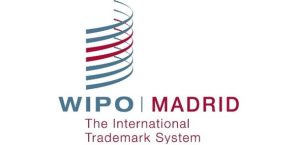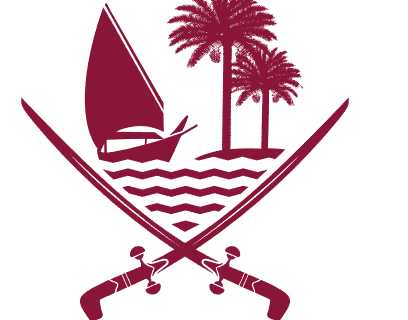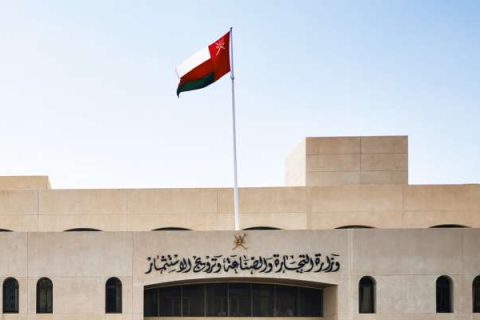A Guide for IP Experts – Introduction to The Egyptian Trademark Law
Why Trademark protection in the Arabic Republic of Egypt?
There is no doubt that the Egyptian market is one of the most important markets in the Middle East, not only for possessing an ancient civilization and its interest since ancient times in what is now called the field of intellectual property, but also for its strategic geographical location in the heart of the world. Egypt is an Arab African transcontinental country extending over the northeastern corner of Africa and the southwestern corner of Asia through a land bridge formed by the Sinai Peninsula, making it a gateway for import and export by land and sea. Egypt has the second largest investment return in the world and possesses a high percentage of the population, making it a center for massive consumption targeting more than one hundred million consumers.
Also, the large number of the population provides opportunities for the presence of skilled and trained labor, making it the regional hub of skilled labor. It goes without saying that Egypt’s ownership of the Suez Canal holds immense significance. As the shortest route between East and West, the canal’s unique geographical location connects the Mediterranean Sea at Port Said with the Red Sea at Suez. This makes it a vital global navigational channel, highlighting its special importance for both Egypt and the world.

As for the facilities and laws encouraging investment in recent times, Egypt has taken a different path as a fertile environment for local and foreign investment, and one of the most important means that helped in this is the Investment Law No. 72 of 2017 and its various facilities, the most prominent of which are:
1- Obtaining financing: A strong foundation has been laid for the growth and development of the small and medium-sized enterprises sector by enhancing financial inclusion.
2- Ease of starting activity: Multiple options have been provided for investors to streamline registration procedures and issue approvals for licenses. The recent administrative reform has expedited investment procedures, reduces the time required to issue investment licenses, purchase land, and obtain utility services.
3- Activating the one-stop system at the General Authority for Investment and Free Zones: The one-stop system is effectively operated in the new law through decentralization. Moreover, a considerable number of representatives of relevant entities were present at the Investor Services Center them to sign investor documents.
4- Accreditation offices across the Republic: For the first time, third parties from the private sector will assist the government and will take over the examination of investor applications and their documents to obtain licensing approvals through these independent accreditation offices.
5- Investor Protection Mechanisms have been put in place to ensure that the investor’s property is not nationalized. It also prevents the implementation of arbitrary or discriminatory decisions or abuses of power. Projects may not be nationalized, guarded or frozen except based on a court ruling. The law also activates guarantees for investor protection through several committees such as the Ministerial Committee for the Resolution of Investment Disputes, the Ministerial Committee for the Settlement of Investment Disputes, and the Grievance Committee.
6- Enhancing competitiveness: monopolies have been eliminated, governance and transparency encouraged, and most importantly, setting clear timelines for approval processes; Egypt’s investment law is a revolutionary step toward eliminating red tape and reducing bureaucracy.
7- Governance: The rules of good governance of the General Authority for Investment and Free Zones were clarified, and the roles and powers of the Supreme Council for Investment were defined, which is responsible for developing investment policies and strategies in accordance with the social and economic objectives of Egypt.
Moreover, the Egyptian state worked with modern technological and scientific methods to create a fertile environment to attract foreign investment. It is essential to acknowledge the interests and accomplishments that the country has made in the realm of intellectual property considering Egypt’s historical role in acknowledging intellectual property rights even before the enactment of the related regulatory laws.
The Egyptian Judiciary law was protecting the intellectual property rights in the absence of specific regulations applying the general principles of natural law and rules of justice until the mid- twentieth century. However, the urge for those regulations has led the legislators to enact laws in order to safeguard intellectual property rights properly. Those laws and regulations included literary and artistic property as well as Trademarks and Commercial Data law promulgated by the law No. (57) of 1939, passing through the Patents Law and industrial designs promulgated by Law No. (132) of 1949, ending with the Copyright Protection Law promulgated by Law No. (354) of 1954.

The Egyptian legislator has made several efforts to be able to keep himself updated about all amendments that has been issued during that time. Consequently, he has implemented a unified legislation dealing with all aspects of intellectual property rights, and this resulted in the enactment of the legislation of the Intellectual Property Law No. 82 of 2002, which encompasses four books, each book covers a different field of intellectual property.
Below is a glimpse of the aspects that each book covers:
- Book One: Patents and utility models, design schemes for integrated circuits, and undisclosed information.
- Book Two: Trademarks, Commercial Indications, Geographical Indications, Industrial Designs and Designs.
- Book Three: Copyright and Related Rights.
- Book Four: Plant Varieties.
Given the significance of the intellectual property according to the Egyptian State which considers it as a crucial pillar for economic development, fostering innovation and creativity, governing the institutional structure of the intellectual property has become one of the main objectives of Egypt. This has led to the enactment of the Law No. 163 of 2023 to establish the Egyptian Authority for Intellectual Property. The main target behind this law is to avoid remarkable administrative dispersion which may result from the existence of multiple competent authorities.
It’s evident that the Egyptian state is strongly interested in the realm of intellectual property. This has been reflected in its interests in keeping up to date with new developments starting from the idea of protecting the trademark beginning from filing until registration, and extending to enforcement and protection via administrative and judicial procedures. We will elaborate this in the following sections:
Treaties and agreements related to the implementation and protection of trademarks in the Arab Republic of Egypt
(Convention-Treaty-Date of Accession)
- Paris Convention for the Protection of Industrial Property.
(This international convention is the first major step taken to help creators ensure the protection of their intellectual works in other countries, and Egypt acceded to that convention on 1/7/1951).

- Madrid Convention Concerning the International Registration of Trademarks.
(The system allows the protection of the mark in a large number of countries through the international registration that applies in each of the designated Contracting Parties, and Egypt’s accession to that Convention was on 1/7/1952).
- Madrid Convention for the Suppression of Counterfeit or Misleading Indications of Origin of Goods.
(Egypt acceded to that Convention on 1/7/1952 and the benefit of this agreement is that all goods bearing a false or misleading indication of the exporter, in which it is directly or indirectly indicated that one of the contracting countries or any place therein is the country or place of origin thereof, must be seized upon importation. Their importation may be prohibited as well as certain penalties may be imposed in this concern .their import prohibited or other measures and penalties shall be taken in this regard).

- TRIPS Agreement.
(Agreement on the Commercial Aspects of Intellectual Property Rights, date of accession 1/7/1952).
- Nice Convention Concerning the International Classification of Goods and Services for the Purposes of Trademark Registration.
(The Nice Agreement established a classification of goods and services for the purpose of registering trademarks and service marks, date of accession 1/7/1951).
- Trademark Law Treaty signed in Geneva in 1994.
(Date of accession by Egypt on 3/8/2000 The purpose of the Trademark Law Treaty (TLT) is to standardize and popularize national and regional trademark registration procedures by simplifying and harmonizing some aspects of trademark applications and managing trademark registrations in multiple jurisdictions so that trademark applications and the administration of trademark registrations in multiple jurisdictions are simpler and straightforward
Egyptian laws and regulations governing trademarks.
Trademarks and Commercial Indications Law promulgated by Law No. (57) of 1939.
Law of Patents and Industrial Designs promulgated by Law No. (132) of 1949.
Copyright Protection Law promulgated by Law No. (354) of 1954.
Egyptian Intellectual Property Protection Law No. 82 of 2002.
Executive Regulations by Prime Minister’s Decree No. 1366 of 2003.
Law No. 175 of 2018 on combating information technology crimes.
Law No. 180 of 2018 regulating the press and media.
Law No. 190 of 2008 on monopolistic practices.
Customs Law No. 207 of 2020.
Executive Regulations of the Customs Law No. 430 of 2021.
The competent Authorities concerned in protection of trademarks.
(Administrative – Judicial)
- First: – The competent authority for the registration of trademarks:
(Internal Trade Development Authority) Trademarks are registered at the Trademarks and Industrial Designs Registration Department, headquartered: 4 Nasr Road – Makram Ebeid Intersection.
Grievances and objections to the registration of trademarks are usually addressed by submission at the Trademark’s Department. Thereafter, the latter assigns a specific date for the sessions and notifies the concerned parties with the relevant details. The competent authority which consists of three members including the state council is usually appointed by the competent minister.
- Second: – The authority entrusted with appealing the cancellation (judicially) on the decisions of the trademark management:
(Jurisdiction of the first degree of the Administrative Court, the second degree of the Supreme Administrative Court) Decisions issued by the trademark Registration department can be appealed within a timeframe of 60 days starting from the date of issuance of the decision. This period starts from the day following the notification or announcement. The lawsuit should be filed with the court clerk. Afterwards, the Commissioners Authority examines it and refers it to the competent authority for a ruling based on the requests and documents submitted. The lawsuit is then reserved for judgment. Its worth mentioning that the judgment can be appealed again by the concerned parties before the second degree level by following the same process for filing a lawsuit before the court of first instance.

- Third: – The competent authority for trademark cancellation.
Economic Courts are the competent authorities to handle cases related to immitation and ilicit registrations. This happens after passing through the administrative procedures of the Trademark Department of Objection and grievance.In order for the plaintiff to take the legal action , certain conditions must be present such us the registration of the mark, continuous use of the mark for a span of five years. However, the failure of usage will render the registration of the mark invalid especially if associated with bad faith. To proceed with the legal action, a lawsuit sheet must be filed with the court’s clerk Afterwards, the judge will prepare the lawsuit for deliberation before the judgement department.Subsequently,the court will assign an expert whose main role is to inspect and specify the level of imitation of the mark and is responsible for sending his opinion to the judgment department to take the final decision and issue a judgement. It worth noting , that the concerned parties have the chance to appeal the judgment following the same procedures before the court of first instance or economic court.
- Fourth: – In the event of submitting a complaint regarding trademark infringement:
(Investigation of the Ministry of Supply) of the Directorate of Supply and Internal Trade A complaint of violation of the commercial mark is submitted with documents supporting the violation, provided that the trademark that has been imitated is registered and have legal protection.
- Fifth: – The sector concerned with receiving complaints at the Customs Authority regarding imported or exported products:
(Agreements Sector at the Ministry of Foreign Trade and Industry) The owner of intellectual property rights or his representative may submit a complaint supported by a sufficient information to the Agreements Sector at the Ministry of Foreign Trade and Industry of the infringement of these rights and the agreements sector must gather evidence about the validity of these complaints, and if it is found that there is prima facie evidence of infringement, coordination is made with the Customs Authority to apply border procedures against the consignment subject of the attack.
The Customs Authority shall notify the complainant, the defendant and the Agreements Sector at the Ministry of Foreign Trade and Industry by a letter with acknowledgment of receipt or any other means of the measures it has taken to stop the release.
The importer or his representative may appeal to the agreements sector about the failure to release the letter subject regarding the infringement of intellectual property rights within three working days starting from the date of receipt of the notification. Failure to do so within the time frame will render the decision as final
The complaint must include a considerable evidence to prove the infringement, provided that it includes the following data and documents:
- The complainant’s name, profession, position and representative.
- A detailed description of the letter or letters complained of in terms of the exporting country, the number and date of the policy, the port of arrival, the name of the importer and the description of the goods.
- Evidence and documents revealing the existence of infringement of property rights.
- A document proving the intellectual property right that is the subject of the complaint and an undertaking that he has not transferred ownership or usufruct thereof.
- An undertaking from the intellectual property right holder that he did not request an order on a petition from the president of the competent court for one or more precautionary measures, or that no decision was issued to reject the precautionary measure in the event that he submitted the petition.
- Sixth: The competent authority to register factories and companies that own trademarks.
(GOEIC) headquartered: Factories Registration Department at GOEIC headquarters at the airport branch.
Factories or companies that own trademarks or factories in free zones in Egypt that are eligible to export the products mentioned in Resolution 43/2016 and 44/2019 to Egypt shall be registered with the General Organization for Export and Import Control. These products may not be released for the purpose of trafficking, unless they are produced by factories registered or imported from the companies that own the mark or its distribution centers registered with GOEIC.
t’s worth noting that a cancellation decision may be issued by the Chairman of General Authority for Export and Import Control in case the registration conditions weren’t attained. Nonetheless, the interested party has an exclusive right to appeal the decision within a period of sixty days starting from the date of notification of the concerned party.

Below are the conditions for registration at the General Organization for Export and Import Control:
- The applicant must be the legal representative of the factory or his authorized or authorized representative, or he must be the legal representative of the company that owns the trademark or his authorized or authorized representative.
- The factory or company must have a product quality control system issued by a recognized body from the International Laboratory Accreditation Organization or the International Accreditation Forum.
- The following documents must be valid so that the manufacturer or company that owns the mark does not lose one of the conditions of registration:
- Industrial Register
- Quality Certificate
- Trademark title deed.
- The trademark ownership document must be issued by the Trademark Department in the country from which the mark is issued.
- The products in the trademark to be registered must be identical to the products to be registered and contained in the product statement and the industrial register.
Deciphering the Trademark Law in Egypt
In terms of the conditions, its worth noting that the Egyptian legislator has imposed the same conditions that were applied by various countries and which are deemed necessary for the registration of trademarks and to enjoy legal protection. Below is an example of the main factors that every trademark should entail for obtaining a successful registration:
- First: The mark must be new: that is, the trademark must be new in itself, not previously used by another person, and not be an imitation of a previous trademark.
- Second: To be characterized by discrimination: It is to have a special subjectivity that differentiates it from other signs, so that it is an icon of goods and services and be like a signal to the consumer that prints in his mind a certain image that makes it easy to know among other products or goods.
- Third: It shall not be prohibited by law to be registered as a trademark:
Article 67 states: “The following shall not be registered as a trademark or as an element thereof:
- Marks devoid of any distinctive character or consisting of marks or data are nothing but the name given by custom to the products, drawings or ordinary images thereof.
- Signs that violate public order or morals.
- General emblems, flags and other symbols of the State, other countries or international organizations, as well as any imitation thereof.
- Signs identical or similar to symbols of a religious character.
- Red Cross or Red Crescent symbols or other similar symbols that are imitations thereof.
- Images or logos of others unless he agrees to use them.
- Data related to honors degrees is not proven by the applicant to obtain.
- Signs and geographical indications that may mislead or confuse the public or that include false statements about the source of products of goods or services or their other characteristics, as well as marks that contain a fake or forged commercial statement. As stipulated in Article 65 of the law No. 82 of 2002.:”The person who has registered a trademark and who has made use of it for a period of five years as of the date of its registration, shall be deemed the owner of such a trademark, unless precedence of use by a third party is proven.” This implies that the applicant who registers the mark is the sole owner of it and has the exclusive right to sue any other applicant who seeks to register as similar or identical mark except when the latter has proved usage of the mark .
According to Article 68 of the law Law No. 82 of 2002:” “The owner of a world-famous trademark in the Arab Republic of Egypt shall have the right to enjoy the protection prescribed in this law, even if it is not registered in the Arab Republic of Egypt.”
Priority claim for trademarks.
- In reference to the article 75 of law 82 of the year 2002: If an application has been filed within one of the countries or entities which are member of the World Trade Organization, the applicant has within a timeframe of six months following the date of submission of the first application an exclusive right and priority to file in the Republic of Egypt a similar application covering same list of goods.
As per the above, to claim priority certain requirements must be met . Below are the requirements for claiming priority:
- The application must have been submitted in one of the countries or entities that are members of the World Trade Organization or that treat Egypt similarly with regard to the right of priority.
- The previous application should be the first application submitted to register the mark for the same products subject to the application submitted in Egypt.
- The student must specify the date on which the first application was filed.
- The application for the right of priority shall be submitted within six months from the date of filing the first application, otherwise the right of priority shall be forfeited.
Priority determination when its conditions are met shall be considered on the date of submission of the first application (Article 74 of the Implementing Regulations).
Extending trademark protection by subsequent designation.
An applicant has the right to request a subsequent designation as a result of an international registration which has been completed successfully. However, subsequent designations aren’t applicable in countries which haven’t yet acceded the Madrid system of international registration. For instance, an interested applicant doesn’t have a chance to select Qatar as a subsequent designation for an international registration since the latter isn’t part of Madrid Protocol. Conversely, Egypt could be selected as a subsequent designation as it is a considerable member of Madrid.
- How to request a subsequent designation: Either electronically through the WIPO website or through the MM4 form if there is a desire that the subsequent appointment be made after making entries by changing the name, address, etc., and sending the form directly to WIPO through the WIPO contact service, or through the relevant Office of the holder of the international registration.
- If the application is submitted directly to WIPO, the effective date of the subsequent designation will be the date of receipt by WIPO of the application, however, if there is an application for designation accompanied by a record of change, the date of the subsequent designation shall be the date of the day following the recording of the change.
- It should be noted that the subsequent designation lapses simultaneously with the expiration of the protection period for the trademark. This means that the term of protection of the trademark is 10 years and the subsequent designation is limited to that timeframe as well as the existence and non-existence.Upon renewal, the date of registration is the one that shall be considered and not that that relates to the subsequent designation.
Filing a trademark registration application- Requirements
- Any interested party seeking to file a trademark application in Egypt has to comply with all the necessary requirements which include submission of the application before the Trademark Registration Department along with all required documents. Once, the documents are submitted, the appliucant should wait until a decision is issued from the aforementioned competent authority.
- Required Documents:
- Request for Trademark Registration.
- 4 photos of the brand.
- An extract from the commercial register, memorandum of association or legal system.
- Request for priority, if any.
- A notarized power of attorney from the applicant.
Trademark registration internationally.
- After submitting the WIPO application for trademark registration, the application undergoes examination for a period of 2 months. Once the application is approved, it will be published in the International Trademark Journal which includes all the trademarks that have been accepted or rejected by the organization.

Trademark Classifications in the Arab Republic of Egypt
- According to the text of Article 74 of the Egyptian Intellectual Property Law:
The mark shall be registered for one or more categories or types of products produced by the applicant or intended to be produced in accordance with the conditions stipulated in the executive regulations of this law.
The categories used in the Arab Republic of Egypt is an international classification of goods and services applied for the purposes of registering marks. A new edition of the classification is published every five years. Since 2013, a new version of the classification of goods and services for 45 classes is published annually.
- From the previous definition, it is clear that it is possible to register on more than one category of products produced by the applicant, provided that these products are not contrary to the law, public order or morals, and if it is proven to the commercial registration authority that the goods or service provided to the law are violated, it may refuse to register the mark, for example: packaging and packaging narcotic substances for non-medical purposes, advertising for content that violates the law and morals, such as pornographic content.
Judicial protection of trademarks
-In order for the trademark owner to keep his capital, and the trademark is certainly one of the most important capital assets, he will not only work to register the trademark, but subsequent protection after registration must be guaranteed.
According to the provisions of the Intellectual Property Law No. 82 of 2002, and the text of Article 82, “The decision of the Authority referred to in Article 81 of this law may be challenged before the competent administrative court in accordance with the procedures and deadlines stipulated by the State Council Law.
Article 91 reads as follows: The competent court may, at the request of any interested party, order the cancellation of the registration of the mark by an enforceable judicial ruling, if it is proven that it has not been used seriously – without justification estimated – for a period of five consecutive years.
The legislator set the deterrent penalties stipulated in Article 113 of the Intellectual Property Law: “Without prejudice to any more severe penalty in any other law, the following shall be punished by imprisonment for a period of not less than two months and a fine of not less than five thousand pounds and not exceeding twenty thousand pounds, or by one of these two penalties:
1- Anyone who forges or imitates a trademark registered in accordance with the law in a manner that misleads the public.
2- Anyone who intentionally uses a forged or counterfeit trademark.
3- Anyone who maliciously places on his products a trademark owned by another.
4- Anyone who knowingly sells or offers for sale or trading or acquires with the intention of selling or trading products bearing a counterfeit, counterfeit or unlawfully placed trademark. In the case of recidivism, the penalty shall be imprisonment for a period of not less than two months and a fine of not less than ten thousand pounds and not exceeding fifty thousand pounds.
In all cases, the court shall order the confiscation of the products subject of the crime, the amounts or things obtained from them, as well as the tools used in their commission… Upon conviction, the court may order the closure of the facility used by the convicted person in committing the crime for a period not exceeding six months.
Trademark examination process and notification of results
- The trademark registration application shall be examined to determine the eligibility of the mark for protection from non-existence, and this process takes from 10 to 14 months, and the trademark application to examine its result is either for absolute or conditional acceptance, or otherwise it may be rejected on the basis of previous rights or non-discrimination.
- The applicant would be notified by the decision of either acceptance of rejection of trademark registration:
If the Trademark Office (TMO) accepts the trademark, it proceeds through the standard registration process. However, if the Commercial Registry Authority issues a conditional acceptance, the applicant must make the required amendments to meet the examiner’s requests. Typically, the applicant is notified within 30 days from the decision’s issuance date. Failure to implement the required amendments may result in the application being rejected by the authority.
- Internationally filed applicationa are subject to the same period of examination.
Rejections in the Arab Republic of Egypt
- In case a trademark application is rejected due to conflict with another mark, violation of non-discrimination laws, or if the applicant fails to respond to required amendments by the Commercial Registry Authority resulting in a rejection decision, the applicant has the right to appeal the rejection decision according to the law.
- Article 78 states: “The applicant for registration may appeal against the Authority’s decision referred to in Article (77) of this law within thirty days from the date of notification thereof, and grievances shall be considered by one or more committees formed by a decision of the competent minister from three members of the State Council.
- The Applicant or his agent must be notified in writing of this decision by a recommended letter with acknowledgment of receipt, within thirty days from the date of issuance of the decision.
- In the formation of the committee referred to in Article (78) of the law, one of the members of the committee shall be experienced in the subject of the grievance, and the person who examined the mark subject of the grievance shall not be among the members of the committee, and the complainant shall be notified at least fifteen days before the date of the session.
- In the event of a decision to reject the international registration, the applicant has the right to file an appeal with the grievance committee. This must be done within 60 days from the date of notification, with an additional 30 days allowed for foreign submissions. Publications in the Arab Republic of Egypt
- In the event that the application is accepted, it will be published in the Official Gazette of Trademarks (an official gazette published by the Ministry of Supply and Internal Trade on its official website periodically every 7th day from the beginning of each Gregorian month) for a period of 60 days in accordance with the law.
- In the case of acceptance of the trademark, the publication of the decision issued for acceptance in the Official Gazette shall be in accordance with the provisions of Article 80 of the Intellectual Property Law.
Oppositions in the Arab Republic of Egypt:
Any interested party may oppose a trademark application before the competent authority within a period of 60 days starting from the date of publication.
The Authority shall send a copy of the notice of opposition to the applicant within thirty days from the date of receipt of the decision to it, and the applicant shall submit to the Authority a written response to the opposition within thirty days from the date of receipt of the notification, otherwise the application is deemed withdrawn.
According to Article 82, “The decision of the Authority referred to in Article (81) of this Law may be appealed before the competent Administrative Court in accordance with the procedures and dates stipulated in the Law of the State Council.
- In case an interested party wants to file an opposition against an international mark, the same deadlines for opposing national applications shall apply.
* Note that all appointments related to grievances and objections within the Marks Department start to be calculated from the date of notification (i.e. the day of notification is calculated within the calculated number)
Renewals and Grace Periods of trademarks in the Arab Republic of Egypt :
- The term of trademark protection is ten years, calculated from the date of filing the application., the owner of the mark has the period specified by law to renew the mark for a similar period. If the applicant fails to renew his mark within the timeframe prescribed by the law, the mark will eventually lapse . Its worth noting that the law has granted the applicant a grace period of 6 months to renew his mark in the event that he fails to do so in the prescribed period. However, additional fees will apply with reference to article 90 of the executive regulations.
- Likewise,an international trademark should be renewed every ten years . This happens directly on the WIPO website . It worth mentioning that a reminder notice will be sent to the applicant before the renewal of the mark confirming the expiry of the trademark. the renewal of an international trademark, protection is renewed every ten years also directly on the WIPO website, and shortly before the date of renewal, an informal notice confirming the expiry date of the international registration is sent.

Who is eligible to register in the Arab republic of Egypt ?
- According to the text of Article (66) of the Egyptian Intellectual Property Law, every natural or legal person, whether Egyptians or foreigners, who belong to or take a real and effective center of activity for them in one of the countries or entities that are members of the World Trade Organization or that treat the Arab Republic of Egypt as a reciprocal character, shall have the right to apply to the Commercial Registration Authority for registration of a trademark.
Legal entities have the option to apply for trademark registration independently or through an authorized agent, providing the required documents as per the commercial register’s guidelines. If an applicant authorized an agent to act on his behalf ,a power of attorney should be submitted to the registrar . However if the applicant is submitting the application individually, then an ID is sufficient. it is highly recommended to seek assistance from a specialized professional such as a patent agent or an intellectual property lawyer. These experts can offer invaluable advice, streamline the registration process, and address any issue the application may encounter based on their extensive experience and knowledge in the field of intellectual property especially trademark registrations.
Consequently, its highly recommended to seek the assistance of a specialized legal agent in order to safeguard your intellectual property assets and ensure smooth registration.










